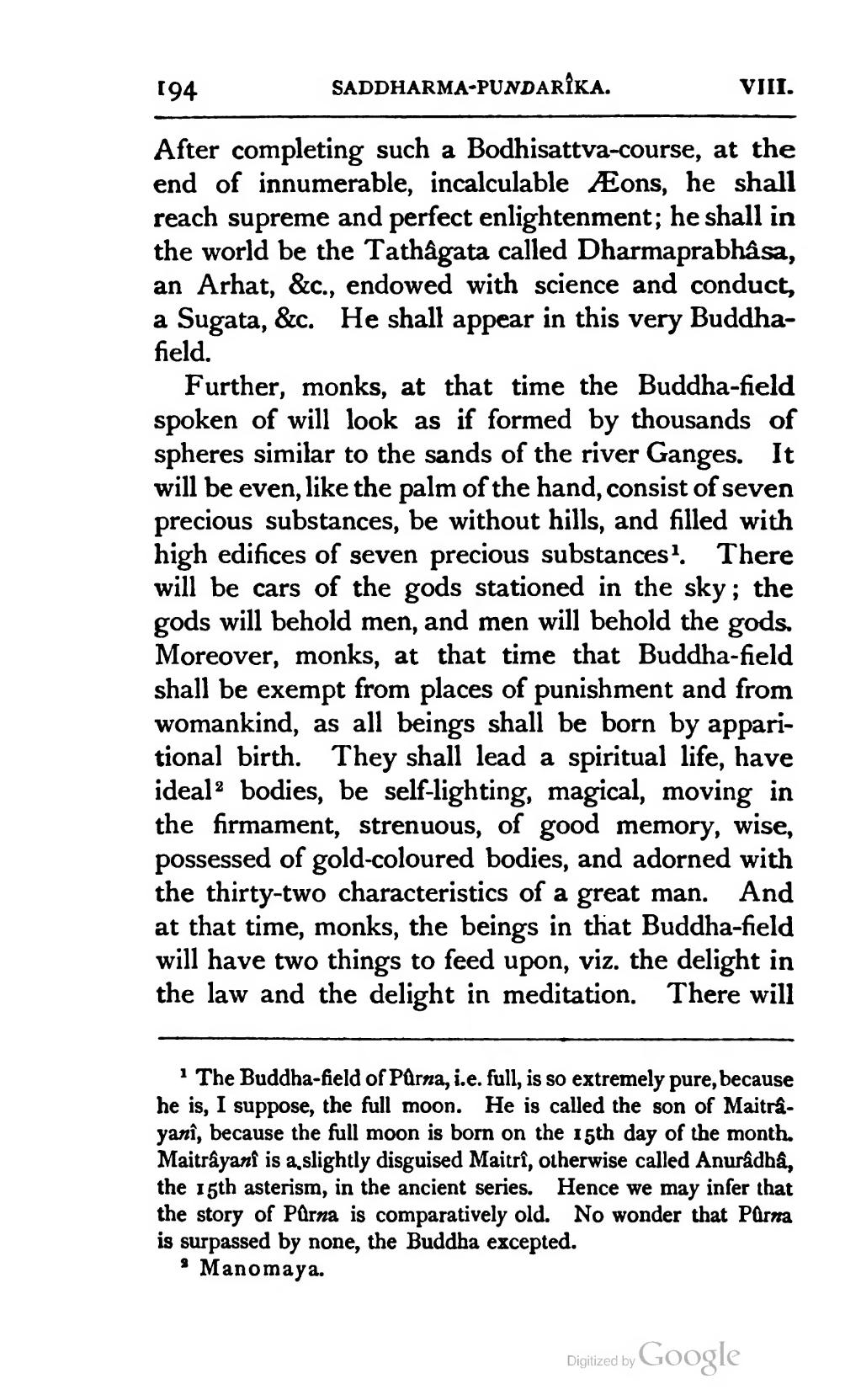After completing such a Bodhisattva-course, at the end of innumerable, incalculable Æons, he shall reach supreme and perfect enlightenment; he shall in the world be the Tathâgata called Dharmaprabhâsa, an Arhat, &c., endowed with science and conduct, a Sugata, &c. He shall appear in this very Buddha-field.
Further, monks, at that time the Buddha-field spoken of will look as if formed by thousands of spheres similar to the sands of the river Ganges. It will be even, like the palm of the hand, consist of seven precious substances, be without hills, and filled with high edifices of seven precious substances[1]. There will be cars of the gods stationed in the sky; the gods will behold men, and men will behold the gods. Moreover, monks, at that time that Buddha-field shall be exempt from places of punishment and from womankind, as all beings shall be born by apparitional birth. They shall lead a spiritual life, have ideal[2] bodies, be self-lighting, magical, moving in the firmament, strenuous, of good memory, wise, possessed of gold-coloured bodies, and adorned with the thirty-two characteristics of a great man. And at that time, monks, the beings in that Buddha-field will have two things to feed upon, viz. the delight in the law and the delight in meditation. There will
- ↑ The Buddha-field of Pûrna, i.e. full, is so extremely pure, because he is, I suppose, the full moon. He is called the son of Maitrâyanî, because the full moon is born on the 15th day of the month. Maitrâyanî is a slightly disguised Maitrî, otherwise called Anurâdhâ, the 15th asterism, in the ancient series. Hence we may infer that the story of Pûrna is comparatively old. No wonder that Pûrna is surpassed by none, the Buddha excepted.
- ↑ Manomaya.
